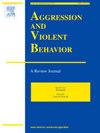The effects of hot spots policing on violence: A systematic review and meta-analysis
IF 3.4
2区 心理学
Q1 CRIMINOLOGY & PENOLOGY
引用次数: 0
Abstract
Violence is highly concentrated in a small number of very specific “hot spot” locations within cities. The concentration of violence at these places tends to be stable over extended time periods, suggesting highly localized place characteristics and dynamics generate persistent violence. Research suggests police can be effective in controlling violence when they focus their attention on these small high-violence locations. Past systematic reviews and meta-analyses of hot spots policing studies have not fully considered how this strategy impacts violence in general and its specific effects on violent crime types such as assaults, robberies, and violent firearm crimes. This study draws on data used in a previously completed systematic review of hot spots policing programs including 32 studies with 38 tests of the effects of this police strategy on violence. Meta-analyses report hot spots policing is associated with significant reductions in violence in treated places relative to comparison places without evidence of violent crime displacement. Increased traditional policing interventions reduced violence in treated hot spots as did problem-oriented policing interventions when implemented properly. Police departments adopting this effective violence reduction approach must design these programs in ways that do not create unintended harms, such as excessive enforcement, on communities.
热点警务对暴力的影响:系统回顾与荟萃分析
暴力事件高度集中在城市中少数非常特殊的 "热点 "地区。这些地方的暴力集中程度往往在较长时间内保持稳定,这表明高度本地化的地方特征和动态会产生持续的暴力。研究表明,当警方将注意力集中在这些暴力事件高发的小地点时,可以有效地控制暴力事件。过去对热点地区治安研究的系统回顾和荟萃分析并未充分考虑这一策略对暴力的总体影响,以及对袭击、抢劫和暴力枪支犯罪等暴力犯罪类型的具体影响。本研究借鉴了之前完成的热点治安项目系统性回顾中使用的数据,其中包括 32 项研究和 38 次关于该警务策略对暴力事件影响的测试。元分析结果表明,热点地区警务与对比地区相比,在没有暴力犯罪转移证据的情况下,受影响地区的暴力事件显著减少。增加传统的治安干预措施与适当实施以问题为导向的治安干预措施一样,都能减少热点地区的暴力事件。采用这种有效减少暴力方法的警察部门在设计这些方案时,必须避免对社区造成意外伤害,如过度执法。
本文章由计算机程序翻译,如有差异,请以英文原文为准。
求助全文
约1分钟内获得全文
求助全文
来源期刊

Aggression and Violent Behavior
Multiple-
CiteScore
7.50
自引率
4.30%
发文量
63
期刊介绍:
Aggression and Violent Behavior, A Review Journal is a multidisciplinary journal that publishes substantive and integrative reviews, as well as summary reports of innovative ongoing clinical research programs on a wide range of topics germane to the field of aggression and violent behavior. Papers encompass a large variety of issues, populations, and domains, including homicide (serial, spree, and mass murder: sexual homicide), sexual deviance and assault (rape, serial rape, child molestation, paraphilias), child and youth violence (firesetting, gang violence, juvenile sexual offending), family violence (child physical and sexual abuse, child neglect, incest, spouse and elder abuse), genetic predispositions, and the physiological basis of aggression.
 求助内容:
求助内容: 应助结果提醒方式:
应助结果提醒方式:


